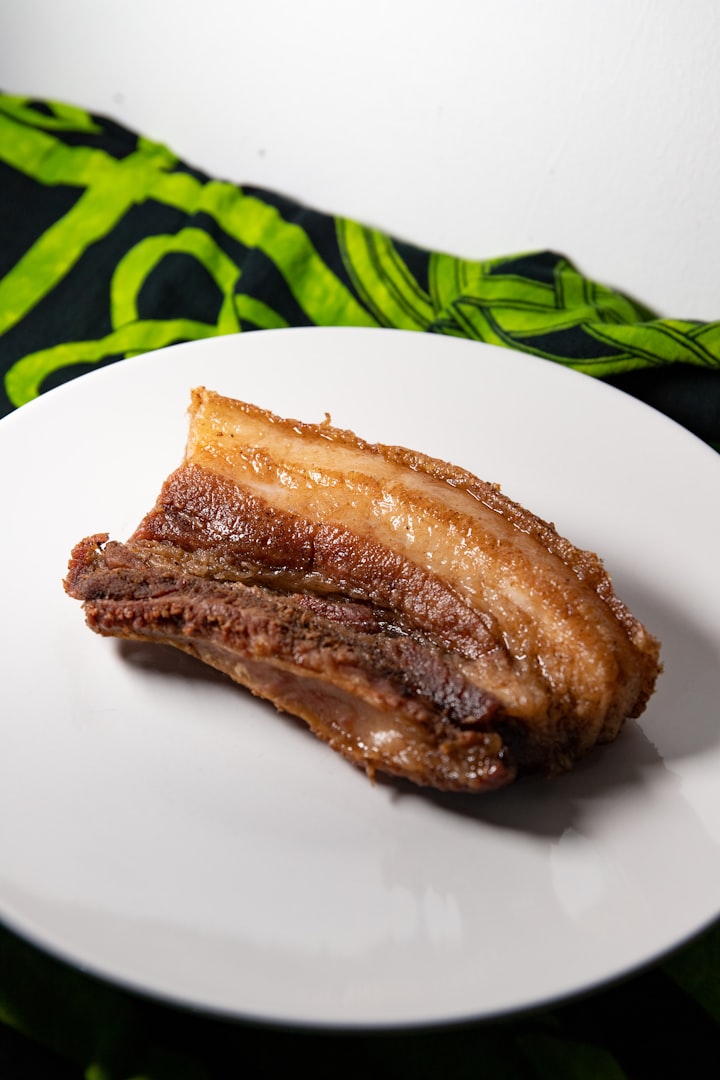
Lechon Kawali is a popular Filipino dish known for its crispy and flavorful deep-fried pork belly. Its history in the Philippines is intertwined with the country's culinary heritage and cultural influences. While specific details might vary, the dish's evolution can be traced through various historical and cultural factors:
Spanish Colonial Influence (1521-1898): The Philippines was colonized by the Spanish for around 300 years, during which time Spanish culinary techniques and ingredients were introduced to the local cuisine. Lechon, a Spanish word meaning "roasted," refers to a whole roasted pig often served during special occasions. This tradition laid the foundation for the development of Lechon Kawali.
Chinese Influence: The Chinese have had a significant impact on Philippine cuisine, introducing various cooking methods, ingredients, and dishes. One of these influences is the technique of deep-frying, which was adopted and adapted by Filipinos to create crispy dishes like Lechon Kawali.
Filipino Innovation: Over time, Filipinos creatively combined these influences to develop their unique version of crispy pork belly. Lechon Kawali was born as a localized adaptation of the Spanish lechon. It involves boiling pork belly until tender, air-drying it to remove excess moisture, and then deep-frying it to achieve the desired crispiness.
Culinary Evolution: Lechon Kawali has become a staple in Filipino cuisine, often served with a side of liver sauce, vinegar dipping sauce, or soy sauce-based dipping sauce. The dish has evolved to accommodate different flavors, such as adding herbs and spices to the boiling process or experimenting with different sauces.
Popularity and Cultural Significance: Lechon Kawali has become a part of Filipino culinary culture, commonly enjoyed at family gatherings, fiestas, and other celebrations. It's also a favorite dish in restaurants, carinderias (small eateries), and food stalls across the country. The dish's popularity can be attributed to its delicious taste and the communal experience it fosters during shared meals.
Modern Variations: As Filipino cuisine continues to evolve, Lechon Kawali has seen modern variations that cater to changing tastes and dietary preferences. Some chefs and home cooks experiment with different flavors, seasonings, and accompaniments to give the traditional dish a contemporary twist.
Simple Lechon Kawali Recipe
Ingredients:
Pork belly slab (around 2-3 pounds)
Water
Salt
Pepper
Bay leaves
Cooking oil (preferably vegetable oil or lard)
Dipping sauce (such as liver sauce, vinegar dipping sauce, or soy sauce-based sauce)
Procedure:
Preparation:
Start by washing the pork belly slab and patting it dry with paper towels.
You can leave the skin on or have the skin scored (cut into a criss-cross pattern) to help the skin become extra crispy during frying.
Boiling the Pork:
Put the pork belly in a pot and add enough water to submerged it.
Add a couple of bay leaves, salt, and pepper to the water for flavor.
Boil the pork belly then lower the heat to simmer it.
Allow the pork belly to simmer for about 45 minutes to an hour, or until the meat is tender.
Air-Drying:
Carefully remove the pork belly from the pot and place it on a wire rack or a clean surface.
Let the pork belly air-dry for several hours or overnight. This helps remove excess moisture from the skin, which is essential for achieving crispy skin during frying.
Frying:
Heat a large frying pan or deep fryer with cooking oil. The oil should be deep enough to submerge the pork belly.
Carefully lower the dried pork belly into the hot oil, skin side down.
Fry the pork belly until the skin is golden brown and crispy. This should take around 15-20 minutes, depending on the size of the pork belly.
Draining and Resting:
Once the pork belly is crispy and golden, carefully remove it from the oil and place it on a wire rack or paper towels to drain excess oil.
Slicing and Serving:
Allow the pork belly to rest for a few minutes before slicing it into serving pieces. The skin should be crispy, while the meat should be tender and flavorful.
Serving and Dipping Sauce:
Lechon Kawali is traditionally paired with a dipping sauce. Common options include liver sauce, vinegar dipping sauce (sukang sawsawan), or a soy sauce-based sauce with calamansi (Philippine lime) and chili.
Remember that working with hot oil can be dangerous, so exercise caution when frying. Also, while this is a basic procedure, you can experiment with seasonings, herbs, and additional steps to add your own twist to the dish. Enjoy your delicious homemade Lechon Kawali!






Comments
There are no comments for this story
Be the first to respond and start the conversation.